The nearly 39 million people who live in apartments here in the US face special challenges when it comes to prepping. The primary one is space, both inside their apartment and outside. But there are other challenges to consider as well. This isn’t to say that apartment dwellers shouldn’t prep, but rather that it takes looking at prepping in a slightly different way. Unfortunately, there really isn’t enough written about facing these challenges.
One small light at the end of this tunnel is that a large percentage of those living in apartments are single. While I don’t advocate for the single life in general, prepping for one is easier than prepping for a family, especially when you have limited space to work with. It’s much easier to find two-bedroom apartments so that you can have an extra bedroom than it is to find three or four-bedroom ones.
Dealing with the Challenge of Location
Before talking about your apartment, let’s talk about location. Apartments exist in the city, the suburbs, and in rural towns, so there’s no one-size-fits-all answer as to whether apartments are in a good location for bugging in. However, apartments can be difficult places to bug in at. The close proximity with so many other people makes it extremely difficult to maintain OPSEC, making it so that a high likelihood that neighbors will come knocking on your door, expecting you to share your preps with them.
The question then is – is there someplace else nearby where you would be better off going to, should a disaster happen? Mostly I’m thinking of family here, but this could also apply to friends that have a house, maybe even a house in the suburbs.
Family or friends can become your survival team, working together to survive in the event of a disaster. As such, their home can become your survival retreat, eliminating many of the problems of trying to survive in an apartment. You’ll still want to have some basic survival gear and supplies in your apartment, enough to get you through a few days, but the majority of your stockpiling can be done at their place, assuming that they have room (like a basement).
This makes your big concern transportation; how to get from your apartment to their home. Hopefully, you’ll be able to drive; but if you can’t, it might be a good idea to have a bicycle as a secondary means of transportation.
Dealing with the Challenge of Space
I’ve written before about the challenge of space, and I recommend renting a larger apartment, if possible. In other words, renting one extra bedroom, over and above what you need to have for sleeping. I’ve always tried to do this, mostly so that I could have an office in the apartment. But that extra space helps with a lot of other things, like storage and, of course, building a stockpile.
But what if you can’t? Your next consideration is renting a storage unit somewhere near your apartment, preferably within walking or biking distance. Depending on where you live, you could probably rent a 6’x 8’ unit for somewhere between $60 and $100. I realize that might be more than some people can afford, but if you can, it’s a good option to try.
If you’re going to rent such a place, you’re going to need some means of hauling things back and forth so that you don’t have to carry boxes. A backpack will work for smaller amounts of things, but you’ll probably need some sort of cart for larger quantities, such as a collapsible wagon or utility cart.
Storage in Your Apartment
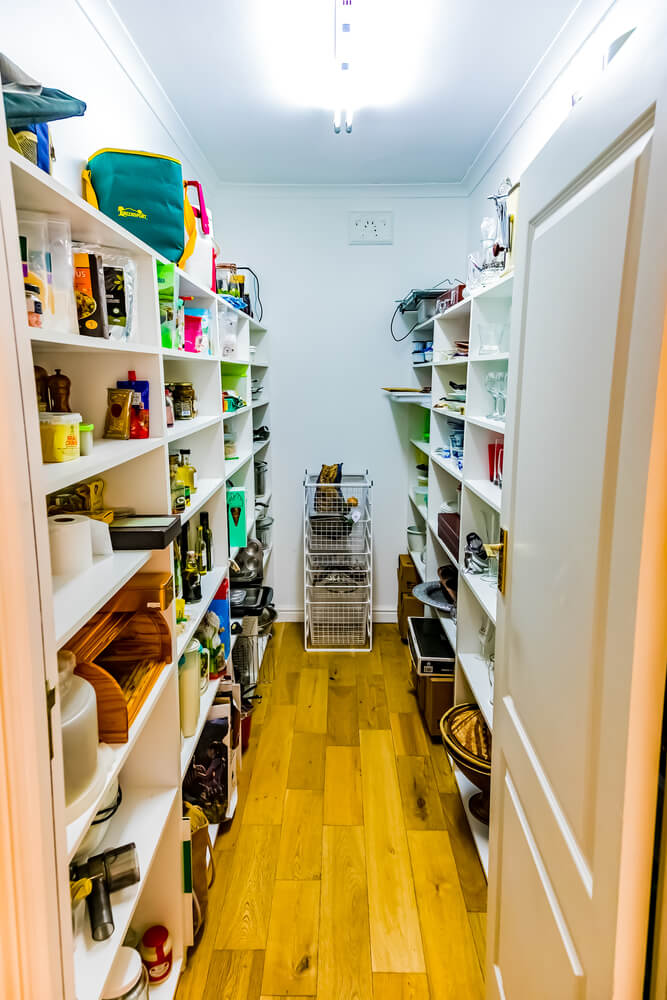
It only makes sense to see how much you can store in your apartment before thinking about renting someplace outside of your apartment just for storage. I’m going to assume that your closets and kitchen cabinets are already full, so I won’t insult you by telling you to use them for your stockpile. Rather, I want to explore other areas where you might be able to store that stockpile within the confines of your apartment.
- Under the bed – Unless your bed sits right on the floor, you should have a fair amount of space under there. Many newer beds are platforms, with the mattress sitting right on top of it, but if you have an older-style bed with a box, then there’s additional space inside the box.
- Waterbed – A waterbed is a real boon for those living in apartments, assuming you can have one. A queen-sized waterbed mattress holds about 196 gallons of water, giving you a great water supply in case of an emergency. If you get an under bed dresser or build your bed frame to allow access underneath, you can still use the storage there.
- Behind and under furniture – Sofas, dressers, chairs, and tables all have space underneath them and, if they are up against the wall, behind them. That space can be utilized for storing food and other items. Cover whatever you put under the furniture with a piece of black cloth, and it will help make it invisible.
- Stack boxes – Speaking of black cloth, you can stack up boxes of food and throw a piece of cloth over them, turning it into an end table.
- Under cabinets – The recessed space under your kitchen and bath cabinets is called a “toe kick.” There’s a board there, running across the front of that space, covering it. Remove that board carefully and fill the space under the cabinets with food. Then either nail the board back on or install magnetic catches to hold it in place.
- HVAC – Your apartment probably has the HVAC air handling unit in a closet somewhere. In many apartments, the door will have a vent in it, usually located at the bottom. This is to allow the return air from the apartment back into the air handling system. Here’s the thing, though, it doesn’t usually need all the space that’s used. Draw a line from the bottom of the vent to the back of the air handling unit. The wedge-spaced area under that line can be used for storage.
- Above closet doors – While our closets tend to get filled, there’s one place that’s left empty. That’s the space inside the closet, above the door. A narrow shelf can be added to that space, increasing the usable space in the closet. Just don’t make the shelf so deep that it makes it difficult to use the existing closet shelf. By the way, this is a great place to keep guns and valuables, as nobody will look for them there.
- Car trunk – Don’t forget about the space in the trunk of your car. While you probably don’t want to fill it all the way up with survival food, it can be a great place to store your bug-out-bag, freeing up space inside your apartment.
Dealing with the Challenge of Cooking
Most apartments have electric ranges, so it can be extremely challenging to cook when the power goes out. Some upscale apartments have gas ranges, but I wouldn’t count on it. Even if yours does, the gas may be out if the electricity is out.
One of the easiest options for cooking when the power is out is to use a barbecue grille, assuming that you have a balcony that you can cook on. I’d avoid “public” barbecue grilles, even if the apartment complex has them because that would attract too much attention from people wanting you to share with them.
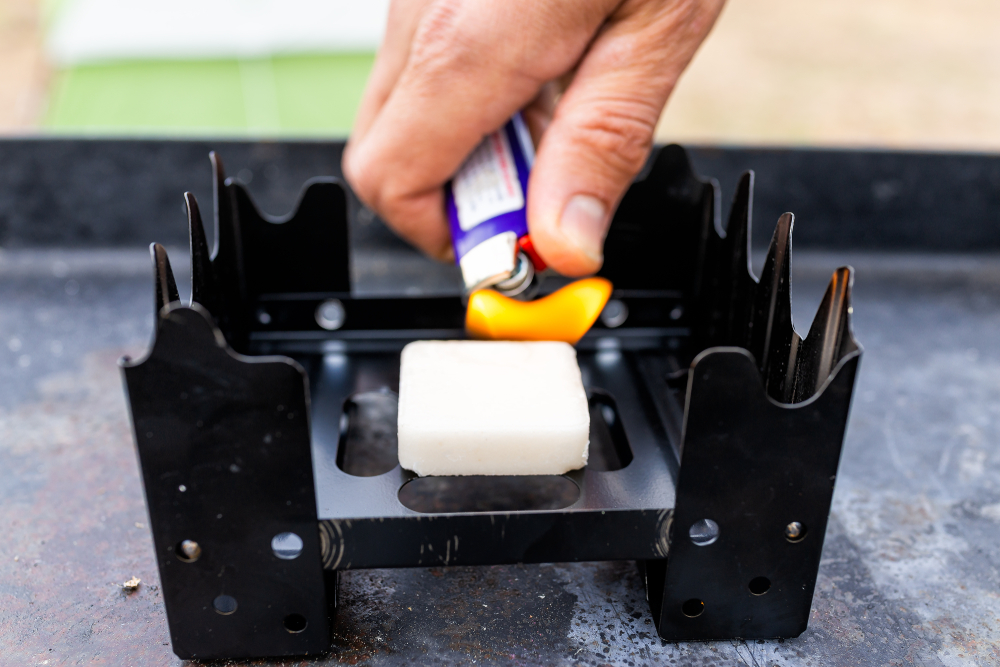
Another good option is to use a propane camp stove. You could either use a larger camp stove with two burners or a smaller backpacking type. Propane is safe for use indoors. Even so, you want to make sure that you have good ventilation.
In a worst-case situation, you can warm up canned food over a candle. All that’s needed, besides a good candle, is something to hold the can in place, either a wire rack, an upside-down ceramic flower pot, or one of the camp stoves designed for use in burning Sterno. Esbit stoves, which use a fuel tablet, will also work.
Dealing with the Challenge of Heating
Heating can be one of the biggest issues for those in apartments. If your apartment has a fireplace in it, that could be the saving grace. But most apartments don’t come with fireplaces and those that do often have a fake fireplace rather than a real one.
Both propane and kerosene heaters can be used safely in an apartment. In the case of propane, make sure that it is rated for indoor use. Either will provide you with heat for a few days, assuming you have that much fuel. The big problem is storing enough fuel to get through more than a few days.
The other thing you can do is to make a solar heater to put in the window. Take a bunch of beer cans and cut both the bottoms and tops out of them, then glue them together to make tubes. These tubes should be about two inches shorter than the height of your windows. Glue several of these together so that they form a solid bank, big enough to fill the window space, less about one inch at both the top and bottom. Finally, paint the whole thing with flat black paint.
This is a passive solar heater that works by natural convection. Sunlight hitting the black aluminum cans will be turned into heat. Since the cans are aluminum, they will transmit that heat quickly. Cooler air will enter the bottom and receive that heat from the cans, warming it. Since warm air rises, it will come out the top, drawing fresh cool air from the bottom. As long as there is sunlight hitting the heater, it will produce heat.
Dealing with the Challenge of Security
By and large, the security we find in homes and apartments is intended to do nothing more than keep burglars out. If someone really wants to get in, all they have to do is kick the door right next to the lockset, and they can pop the door open. Even a deadbolt won’t stop this, as the deadbolt will break through the wood door frame.
Exterior doors are usually wood or metal, making them fairly strong. However, some are merely aluminum skin over a foam core. That’s not as strong. But the real weakness here is usually the door frame, so the big question is whether you have a wood or metal door frame. If you are fortunate enough to have a metal door frame, your apartment is probably fairly secure. If it is wood, the aforementioned scenario of someone kicking the door open is a real risk.
The best thing to do in that case is to install a security striker plate, replacing the existing striker plates for the door lock and deadbolt. When installing it, use screws that are at least three inches long so that they will go through the door frame and into the structural studs behind it. While you are at it, replace the ¾” hinge screws with 3” screws as well. You can probably get away with this, as it won’t be obvious to the property manager.
The security striker plate works because it is longer, installed with more screws, and the screws are longer. It works because it spreads the force of the kick out across multiple screws, which are set deep enough into the structure of the building that they can’t just be torn out.
Besides that, get yourself a pistol and become proficient in its use. The type of pistol isn’t as important as your proficiency. You want to be sure that you can hit what you’re aiming at, even when you’re nervous. That takes a lot of practice.


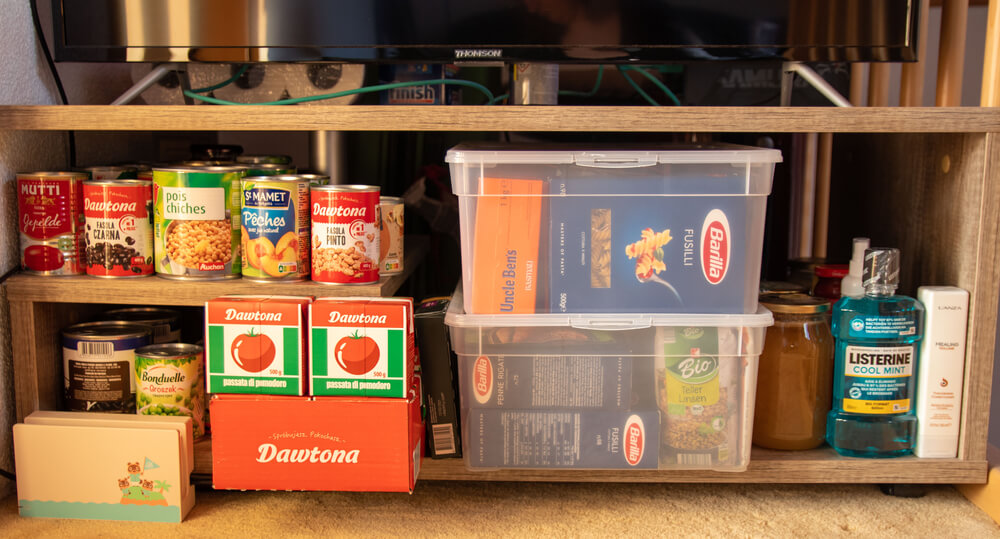


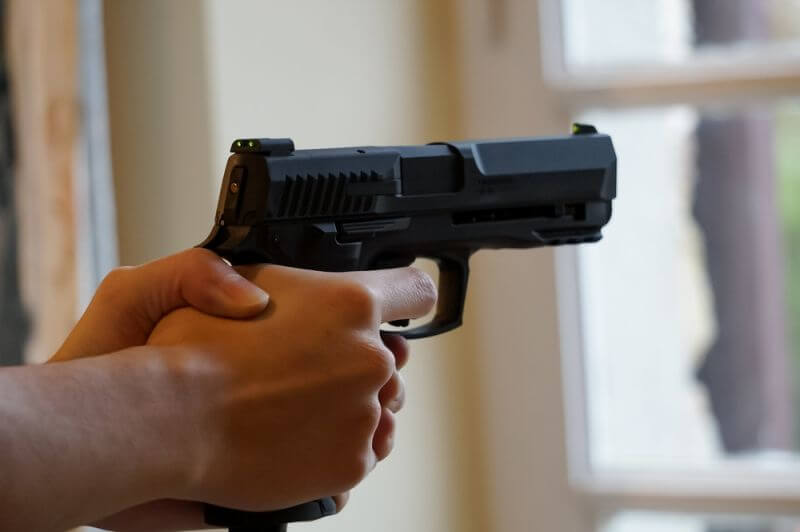
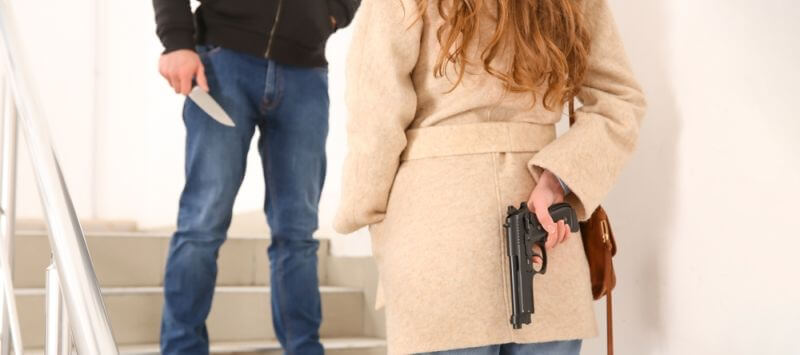
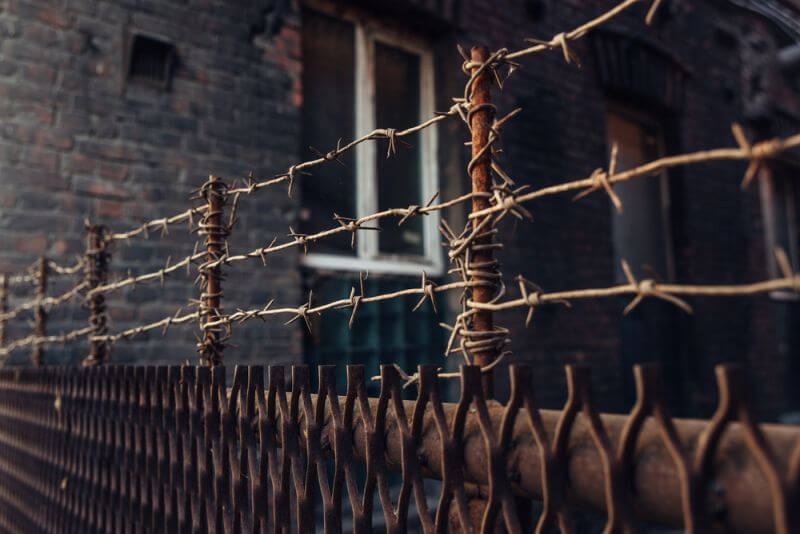
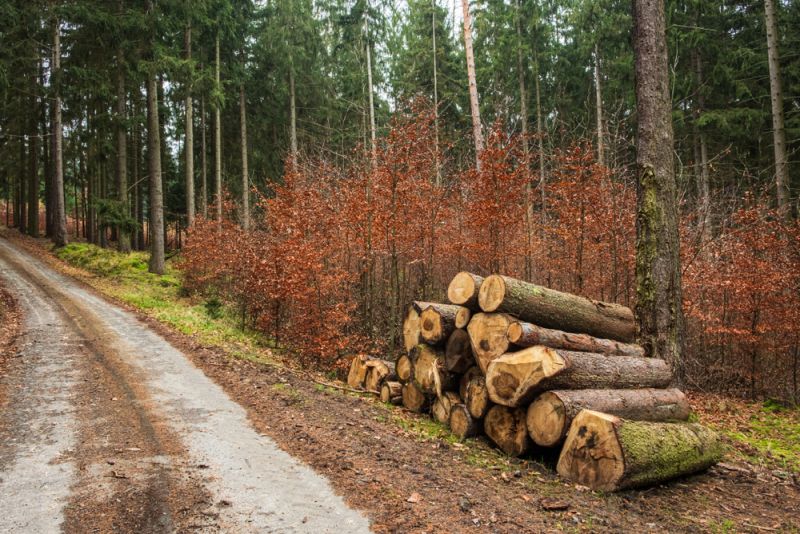


Travelin On | June 22, 2022
|
FINALLY!!! I’ve waited a long time for someone to deal with this subject. Thanks a mint for tackling it. “Living small” for some is a choice of life style, for others it is a requirement due to health, but if it enables people to maintain their independence there’s nothing wrong with it. I just moved from one RV trailer to another and was shocked at how much stuff I had packed into the old trailer, all behind closed doors. Thankfully the new trailer has equal storage space, possibly even a little more. Regardless of limited space it is amazing how much one can get behind closed doors, even if one has to build some shelves or cabinets, buy pre-made cabinets/pantry’s, even if one has to assemble them first, and a lot of storage can be obtained that way. While Mr. White didn’t insult anyone by mentioning it, but because I’ve done it, I’ll add that I’ve filled a lot of empty dresser drawers with stockpile goods when I lived in apartments as well. Power supplies have become table tops and end tables and used for other purposes besides what they are and no one ever thought to question that it wasn’t an unkempt looking dual level end table underneath the cloth. The imagination is about all that limits one from finding or making more storage space.